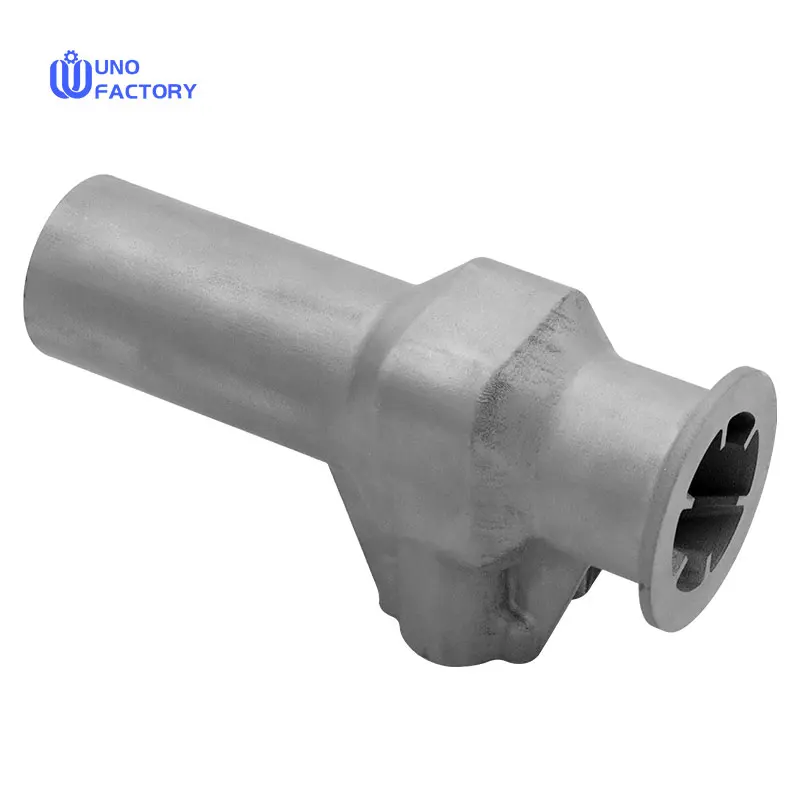Time to read: 6 min

Metal casting is a sophisticated process that, when not meticulously executed, can lead to various defects that compromise the integrity and functionality of the final product. This comprehensive guide delves into 17 common casting defects, exploring their origins, how to identify them, and strategies for prevention and remediation.
Casting defects are irregularities that can occur during the metal casting process, impacting the quality and performance of cast components. Understanding these defects is crucial for manufacturers aiming to deliver high-quality products. This article provides an in-depth look at the types of casting defects, their causes, and how to address them.
Understanding Casting Defects
Casting defects can be broadly categorized into four groups: metallurgical defects, heat-related defects, mold material defects, and casting shape defects. Each category encompasses several specific types of defects, each with unique characteristics and causes.
Metallurgical Defects
These defects primarily stem from issues related to the metal material itself.
1. Porosity Defects
Porosity defects are internal defects that are challenging to detect and often result from trapped air or gas during the casting process.
Gas Porosity
Gas porosity occurs when gas cannot escape the solidifying metal, leading to the formation of bubbles or voids.
Causes: Rapid cooling, inadequate venting, and turbulence in the molten metal.
Remedies: Optimize cooling rates, improve mold venting, and reduce pouring turbulence.
Shrinkage Porosity
Shrinkage porosity arises from the uneven solidification of metal, leading to internal voids.
Causes: Uneven cooling rates and insufficient feed metal to compensate for shrinkage.
Remedies: Use chills and risers strategically and adjust cooling rates.
2. Sinks
Sinks are surface depressions that occur due to insufficient feed metal to fill the contracting metal during solidification.
Causes: Thick sections, poor feeding design, and rapid cooling.
Remedies: Modify casting design for even wall thickness and improve feeding systems.
3. Slag Inclusions
Slag inclusions are non-metallic materials that become entrapped in the casting.
Causes: Contamination from mold materials or pouring system.
Remedies: Use clean mold materials and improve pouring techniques.
4. Dross
Dross forms when metal oxidizes and the oxides float to the surface, creating a scum layer.
Causes: High temperatures and prolonged exposure to air during melting.
Remedies: Control melting temperatures and use dross skimming practices.
5. Soldering
Soldering occurs when molten metal wets the mold surface inappropriately, causing parts of the casting to stick to the mold.
Causes: Mold material reactivity, high pouring temperatures, and poor mold release.
Remedies: Use mold materials with low reactivity, control pouring temperatures, and apply effective release agents.
Heat-Related Defects
These defects are caused by thermal stresses and temperature management issues during the casting process.
1. Hot Tears
Hot tears are cracks that form in the casting as it solidifies due to thermal stresses.
Causes: Rapid solidification and thermal gradients.
Remedies: Slow down the cooling rate and use design features that reduce stress concentrations.
2. Cold Shut
Cold shut occurs when two streams of metal meet but fail to fuse properly due to low temperatures.
Causes: Low pouring temperatures and fast solidification.
Remedies: Increase pouring temperature and ensure even metal flow.
Mold Material Defects
Defects in this category are related to the mold materials and their interaction with the molten metal.
1. Cuts and Washes
Cuts and washes are areas where the mold material is eroded by the molten metal.
Causes: High velocity of metal flow and weak mold materials.
Remedies: Strengthen mold materials and control metal flow rates.
2. Fusion
Fusion defects occur when sand grains from the mold fuse with the molten metal.
Causes: High pouring temperatures and low refractoriness of mold materials.
Remedies: Use high refractory mold materials and control pouring temperatures.
Casting Shape Defects
These defects are related to the shape and alignment of the casting mold.
1. Mismatches
Mismatches occur when mold sections do not align properly, leading to gaps or misaligned castings.
Causes: Inaccurate mold assembly and poor alignment.
Remedies: Ensure precise mold alignment and secure mold sections properly.
2. Flash
Flash is excess material that forms at the parting lines of the mold.
Causes: Insufficient mold closure and high injection pressures.
Remedies: Increase mold closure force and optimize injection parameters.
Conclusion
Mastering the art of casting requires a deep understanding of the potential defects and how to mitigate them. By recognizing the causes of these defects and applying appropriate remedies, manufacturers can significantly improve the quality and reliability of their castings. For expert casting services that prioritize quality and precision, consider partnering with experienced foundries like Unofactory.
Unofactory: Your Partner in Casting Excellence
At Unofactory, we specialize in providing high-quality casting services, leveraging our expertise to prevent common casting defects. Our commitment to quality and attention to detail ensure that your castings meet the highest standards.
Contact Us Today for Casting Solutions
For more information on how we can help you achieve defect-free castings, contact Unofactory. Our team of experts is ready to assist you with all your casting needs.




